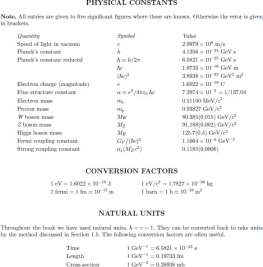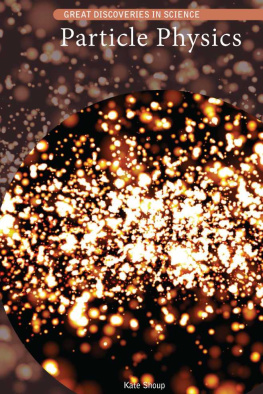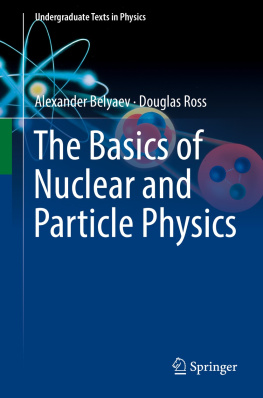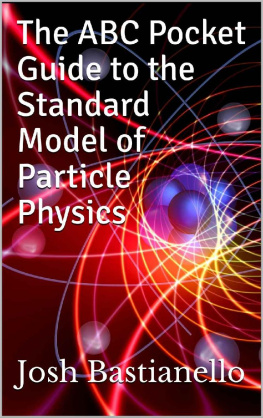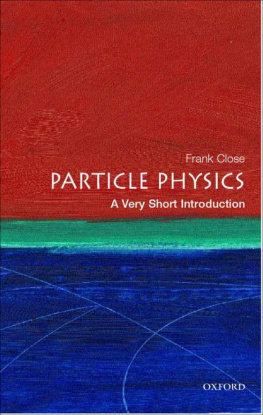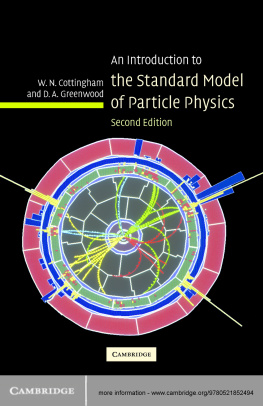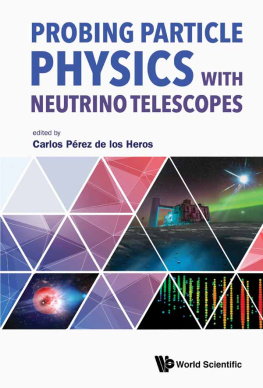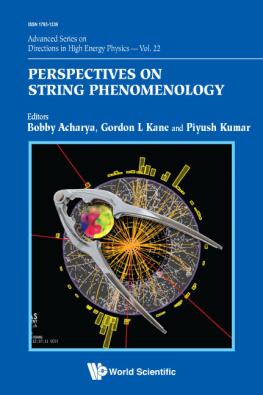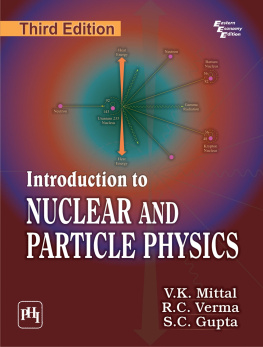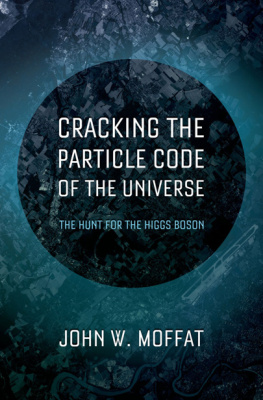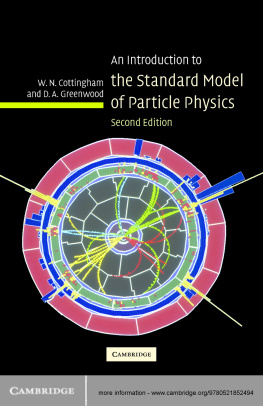
| The Manchester Physics Series |
| General Editors |
| J.R. FORSHAW, H.F. GLEESON, F.K. LOEBINGER |
| School of Physics and Astronomy, |
| University of Manchester |
| Properties of Matter | B.H. Flowers and E. Mendoza |
Statistical Physics
Second Edition | F. Mandl |
Electromagnetism
Second Edition | l.S. Grant and W.R. Phillips |
| Statistics | R.J. Barlow |
Solid State Physics
Second Edition | J.R. Hook and H.E. Hall |
| Quantum Mechanics | F. Mandl |
| Computing for Scientists | R.J. Barlow and A.R. Barnett |
The Physics of Stars
Second Edition | A.C. Phillips |
| Nuclear Physics | J.S. Lilley |
| Introduction to Quantum Mechanics | A.C. Phillips |
| Dynamics and Relativity | J.R. Forshaw and A.G. Smith |
| Vibrations and Waves | G.C. King |
| Mathematics for Physicists | B.R. Martin and G. Shaw |
Particle Physics
Fourth Edition | B.R. Martin and G. Shaw |
This edition first published 2017
2017 John Wiley & Sons, Ltd
Registered office
John Wiley & Sons, Ltd, The Atrium, Southern Gate, Chichester, West Sussex, PO19 8SQ, United Kingdom
For details of our global editorial offices, for customer services and for information about how to apply for permission to reuse the copyright material in this book please see our website at www.wiley.com.
The right of the authors to be identified as the authors of this work has been asserted in accordance with the Copyright, Designs and Patents Act 1988.
All rights reserved. No part of this publication may be reproduced, stored in a retrieval system, or transmitted, in any form or by any means, electronic, mechanical, photocopying, recording or otherwise, except as permitted by the UK Copyright, Designs and Patents Act 1988, without the prior permission of the publisher.
Wiley also publishes its books in a variety of electronic formats. Some content that appears in print may not be available in electronic books.
Designations used by companies to distinguish their products are often claimed as trademarks. All brand names and product names used in this book are trade names, service marks, trademarks or registered trademarks of their respective owners. The publisher is not associated with any product or vendor mentioned in this book. This publication is designed to provide accurate and authoritative information in regard to the subject matter covered. It is sold on the understanding that the publisher is not engaged in rendering professional services. If professional advice or other expert assistance is required, the services of a competent professional should be sought.
Library of Congress Cataloging-in-Publication Data applied for.
A catalogue record for this book is available from the British Library.
ISBN: 9781118911907 (hardback), 9781118912164 (paperback)
But why are such terrific efforts made just to find new particles? asked Mr Tompkins.
Well, this is science, replied the professor, the attempt of the human mind to understand everything around us, be it giant stellar galaxies, microscopic bacteria, or these elementary particles. It is interesting and exciting, and that is why we are doing it.
From Mr Tompkins Tastes a Japanese Meal, by George Gamow (Mr Tompkins in Paperback, Cambridge University Press (1965), p.186).
Suggested Short Course
A brief overview is given in Chapters 1, 2 and 3. For a short course, follow these chapters plus Chapters 4 and 5, Sections 6.1, 6.2, 6.4, 7.1, 7.2, 8.1, 8.2, Chapters 9 and 10, plus Sections 11.1 and 11.2.1, omitting all starred material throughout.
The starred items contain more specialised or advanced material that is not required elsewhere in the book. They may be omitted at a first reading and used for reference when you want to know about a particular topic.
The pictures on the front cover show two Higgs boson production events obtained at the LHC accelerator at CERN. The larger circle shows the decay of the Higgs to four electrons (indicated by the blue and red lines) obtained by the ATLAS collaboration and the smaller circle shows the decay of the Higgs to two gamma rays (indicated by the green lines) obtained by the CMS collaboration.
Editors' preface to the Manchester Physics Series
The Manchester Physics Series is a set of textbooks at first degree level. It grew out of the experience at the University of Manchester, widely shared elsewhere, that many textbooks contain much more material than can be accommodated in a typical undergraduate course; and that this material is only rarely so arranged as to allow the definition of a short self-contained course. The plan for this series was to produce short books so that lecturers would find them attractive for undergraduate courses, and so that students would not be frightened off by their encyclopaedic size or price. To achieve this, we have been very selective in the choice of topics, with the emphasis on the basic physics together with some instructive, stimulating and useful applications.
Although these books were conceived as a series, each of them is self-contained and can be used independently of the others. Several of them are suitable for wider use in other sciences. Each Author's Preface gives details about the level, prerequisites, etc., of that volume.
The Manchester Physics Series has been very successful since its inception over 40 years ago, with total sales of more than a quarter of a million copies. We are extremely grateful to the many students and colleagues, at Manchester and elsewhere, for helpful criticisms and stimulating comments. Our particular thanks go to the authors for all the work they have done, for the many new ideas they have contributed, and for discussing patiently, and often accepting, the suggestions of the editors.
Finally we would like to thank our publishers, John Wiley & Sons, Ltd., for their enthusiastic and continued commitment to the Manchester Physics Series.
J. R. Forshaw
H. F. Gleeson
F. K. Loebinger
August 2014
Authors' preface
Particle Physics is the study of the fundamental constituents of matter and the forces between them. For almost 40 years these have been described by the so-called standard model of particle physics, which provides, at least in principle, a basis for understanding most particle interactions, except gravity. The purpose of this book is to provide a short introduction to particle physics, which emphasises the foundations of the standard model in experimental data, rather than its more formal and theoretical aspects. The book is intended as an introduction to the subject for undergraduate students who have previously taken introductory courses in non-relativistic quantum mechanics and special relativity. No prior knowledge of particle physics is assumed.
The introductory nature of the book and the need to keep it reasonably short have influenced both the level of the treatment and the choice of material. We have tried to take a direct approach throughout, focusing on the interpretation of experimental data in terms of the basic properties of quarks and leptons, and extensive use has been made of symmetry principles and Feynman diagrams, which are introduced early in the book. We have not given any detailed calculations using the Feynman rules, since these are beyond the scope of a typical introductory undergraduate course.
Next page
